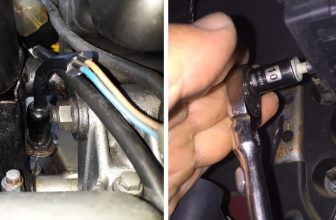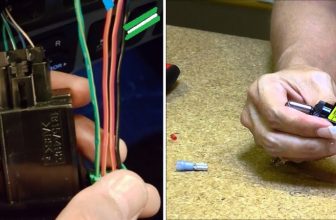How Does a Float Switch Work
Float switches are small devices with a simple purpose; to monitor liquid levels in tanks, basins, and other containers. But have you ever wondered how? This post is going to dive into the details of float switches – what they are, how they work, and why this technology has been invaluable for many industries.
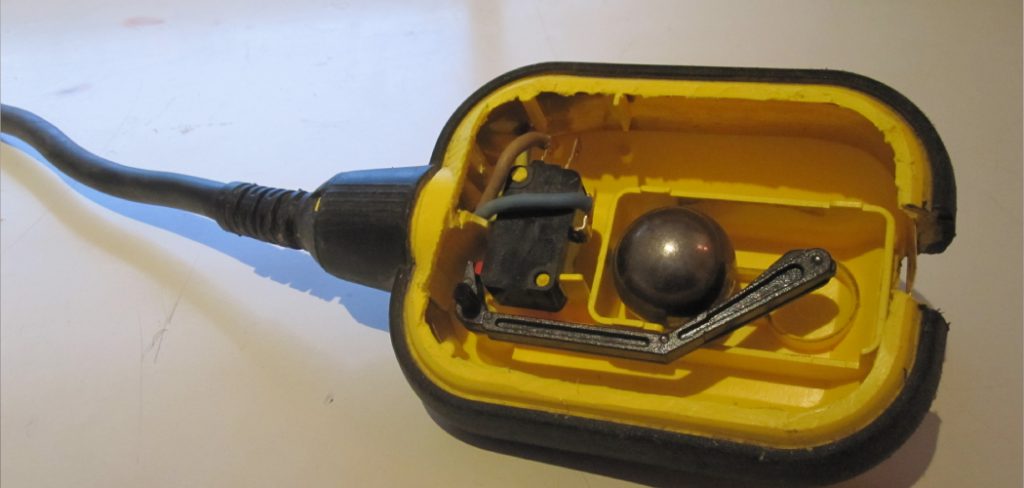
It is important to know how does a float switch work. We’ll take a closer look at the basic systems used in most float switch designs, as well as offer some insight into their function over time. So if you’ve ever wanted to understand more about their inner workings or just be confident when selecting one for your industrial application – read on!
Is It Possible to Adjust the Level at Which the Float Switch Triggers an Alarm?
Adjusting the level at which a float switch triggers an alarm is possible and can be done with relative ease. Float switches are special devices designed to detect liquid levels in tanks or other storage environments; when the liquid level reaches a certain height, the built-in relay is activated, triggering an alarm.
What makes these devices so valuable is the fact that users can customize the specific level at which they want their device to trigger an alarm by simply setting a few internal switches. This allows them to adjust their device to get the exact reaction they need – alerting them when a certain liquid level is reached.
As such, float switches can effectively help monitor many different kinds of environments and even act as useful safety measures for facilities dealing with potentially hazardous liquids.
8 Points on How Does a Float Switch Work
1. Two Main Components: Buoyant Float, Electric Switch.
The float is connected to the switch either directly or via a linkage system like a lever arm.
Float switches are incredibly useful devices that are comprised of two main components; a buoyant float, which sits in the liquid it’s monitoring, and an electric switch that is connected to the float. This connection is either done directly or through a linkage system such as a lever arm which allows the switch to sense very subtle changes in water level.
Float switches have multiple applications because they can be used in liquids of different temperatures and varying levels of corrosiveness. They also have no exposed electrical contacts or switches, as they are fully sealed units making them suitable for use in harsh environments.
Ultimately, these easily implemented devices provide an invaluable service in helping people monitor water levels.
2. Move Up and Down in Respons
This movement triggers the switch to either open or close.

Float switches are a type of device that responds to changes in water level. They are used in a variety of settings, such as to measure the filling and emptying levels in tanks, and can be incorporated into alarms for formulating automatic responses when water levels reach certain thresholds.
Floats move up and down as the water from which they are suspended rises or declines, triggering the switch to either open or close once it reaches pre-determined points. The versatility of this system makes it ideal for many applications, providing pre-set adjustments to areas that require consistent monitoring.
3. Normally Open (No) Type, or a Normally Closed (Nc) Type
When selecting a switch for a water level sensor, it is important to understand the difference between normally open (NO) and normally closed (NC) types. An NO switch will close when the float inside the sensor is at rest, while an NC type will open in that same scenario.
Depending on the application, one type of switch may be more desirable than the other; however, both provide reliable feedback when monitoring water levels.
4. Powered by an External Source
The switch will break (or open) the circuit when the float moves up and close (or complete) it when it sinks back down.
A switch is an integral part of any electrical circuit and when connected to a power source can perform a variety of functions. The main purpose is to break or open the circuit when the float moves upwards, and close or complete it when the float sinks back down.
This mechanism achieves control of electricity in our homes, enabling us to operate devices such as lights, fans, and air conditioners. While its practical functionality serves a purpose, its intuitive form also offers freedom in the choice of different designs, operating parameters, and materials for various situations encountered in both domestic and industrial applications.
5. Use With Mechanical Systems
For example, as part of an automatic water shut-off system for overfilling tanks.
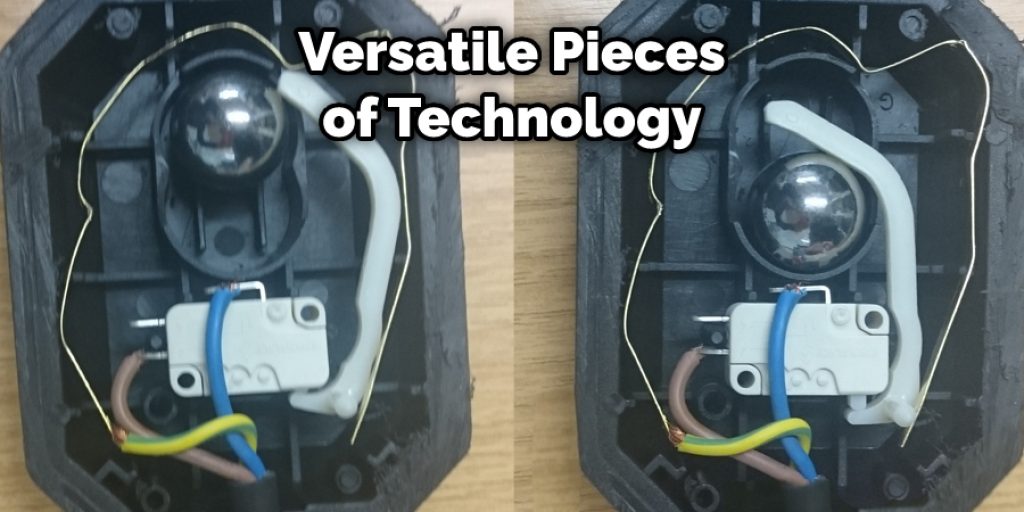
Float switches are versatile pieces of technology that have a variety of practical applications. While many people know that float switches can be used for electrical systems – for example, monitoring water levels in industrial processes – few realize that they can just as easily interface with mechanical systems.
One great example is the installation of a float switch to control overflow in tanks; this allows for a safety system to be triggered once the tank reaches its maximum capacity, automatically shutting off the water flow and preventing any excess from spilling out.
Float switches offer a simple yet robust way to monitor liquid levels and protect against overflow, saving money, energy and property.
6. Automatically Open the Circuit
Float switches are a great addition to any electrical system as a safety feature, preventing damage or injury due to faulty wiring. By being designed to be fail-safe, they automatically open the circuit should power be lost, providing a layer of protection against possible difficulties that would otherwise arise.
Float switches come in different shapes and sizes and are used in a range of applications from medical equipment to laboratories and industrial settings. Although initially designed for larger projects, they are now an important piece of equipment for any operation dealing with electricity.
Thanks to their effective construction and design, float switches offer reassurance when it comes to handling energy safely and efficiently.
7. Water Level Reaches a Pre-determined Point
The switch will trigger an alarm or other response.
Float switches are useful devices for when it’s important to monitor the level of a liquid. When installed in large tanks, for example, they can alert you to any changes in the liquid level. They are small and easy to install, making them an ideal choice for many situations.
Float switches also offer an additional level of security as part of an alarm system; should the liquid reach a certain point, the switch will trip an alarm or other signal so that you can act immediately upon detecting a potential issue.
This is especially beneficial when connected to expensive and sensitive equipment – such as in industrial areas – where it’s critical to properly manage fluid levels to avoid critical failure.
8. Design to Be Rugged and Reliable
Float switches have a distinct advantage over other level-monitoring equipment due to their outstanding dependability. This long-lasting feature of float switches has made them the go-to choice among those who need the regular evaluation of liquid levels.

Their resilient design and capability to perform in difficult conditions make them one of the top options for this purpose – they can be trusted to remain consistent in even the harshest environments. The durability of a float switch makes it an invaluable part of many industrial settings.
Float switch technology is simple yet incredibly useful, making it a great choice for industrial applications that require liquid-level monitoring. If you’re looking to use float switches in your application, make sure you choose one that meets your specific requirements.
Frequently Asked Questions
What Are the Different Types of Float Switches?
Float switches are electrically actuated devices that can detect and respond to changes in the liquid level of a tank or other storage device. This type of switch is widely used for controlling pumps, indicators, alarms, and other active electrical equipment.
There are several types of float switches available on the market today, including mechanical float switches, magnetic reed switches, thermistors, and conductivity probes. Mechanical float switches rely on buoyancy to trigger a switch mechanism when the liquid level changes.
Magnetic reed switches use a magnetized reed switch that is triggered by external magnets as the liquid level changes. Thermistors measure resistance changes in response to temperature shifts caused by changing levels of liquid while conductivity probes use sensors that respond to changes in soluble compounds which activate when submerged.
Each type of float switch has its distinct advantages and disadvantages and should be carefully considered before making a selection.
How Do You Install a Float Switch?
Installing a float switch requires care and precision, but is still fairly simple. Firstly, you’ll need to map out where to mount the device so that it can effectively detect movement within a liquid environment.
It is important to select a location that is easy to access and maintain. Once the location has been found, you will then need to secure the float switch using screws or other appropriate fixtures. After securing the float switch it’s time to connect wires and test the system.
Depending on which type of float switch has been purchased, there may be more additional steps required, so be sure to read all relevant instructions before attempting installation.
What Are Some Applications for a Float Switch?
Float switches provide an important way of remotely controlling and monitoring a range of different tasks. They are frequently used to control pumps in pumping applications, as well as in tank level measurement, sump level control, and high/low water alarms.
Float switches also can be applied in the HVAC industry for circulation pumps, chillers, or boilers. In the food industry, float switches have been used for cooling systems, sump pits, and wastewater tanks—as well as for hazardous overflow prevention.
Float switches are also sometimes used in water fountain displays to detect surges in levels of standing water—thereby helping ensure the presence of clean drinking water.
Conclusion
So there you have it – How Does a Float Switch Work? A float switch is a device used to detect the level of liquid within a tank. The switch may be used in many applications including, sump pumps, sewage treatment plants, and oil tanks.
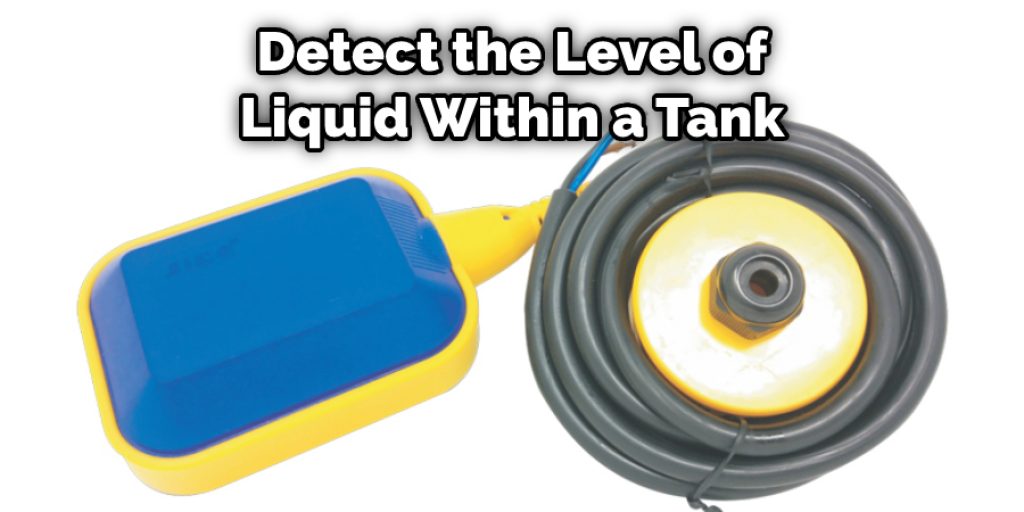
Float switches are produced in several different materials depending on their use case. When selecting a float switch for your application consider the conditions under which it will be operated.
Some common specifications include operating temperature, chemical compatibility, wettability, and hermeticity. With proper installation and selection, a float switch can provide years of reliable service essential for the smooth operation of your process or system.



